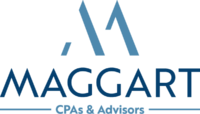Risks vs. Benefits of Life Insurance Loans
Because of the economic downturn triggered by the COVID-19 crisis, many people have found themselves in need of cash to pay unexpected medical bills, mortgage payments and other expenses. One option is to borrow against the cash value of a permanent life insurance policy, but such loans aren’t risk-free.
Recognizing Potential Pitfalls
Before you borrow against a life insurance policy, consider risks such as:
- Reduced benefits for heirs
If you die before repaying the loan or choose not to repay it, the loan balance plus any accrued interest will reduce the benefits payable to your heirs. This can be a hardship for family members if they’re counting on the insurance proceeds to replace your income or to pay estate taxes or other expenses. - Possible financial and tax consequences
Depending on your repayment schedule, there’s a risk that the loan balance plus accrued interest will grow beyond your policy’s cash value. This may cause your policy to lapse, which can trigger unfavorable tax consequences and deprive your family of the policy’s death benefit. - Eligibility
You can borrow against a life insurance policy only if you’ve built up enough cash value. This can take many years, so don’t count on a relatively new policy as a funding source.
Tapping Cash Value
There can be advantages to borrowing from a life insurance policy over a traditional loan. These include:
- Lower costs
Interest rates are usually lower than those available from banks and credit card companies, and there are little or no fees or closing costs. - Simplicity and speed
So long as your insurer offers loans, there’s no approval process, lengthy application, credit check or income verification. Generally, you can obtain the funds within five to 10 business days. - Flexibility
Most insurers don’t impose restrictions on use of the funds. And you have the flexibility to design your own repayment schedule. You can even choose not to repay the loan, though that has negative tax consequences. - Generally no tax impact (as long as policy doesn’t lapse)
Funds acquired by borrowing from a policy aren’t considered income, so they’re typically not reported to the IRS. This differs significantly from surrendering a policy in exchange for its cash value, which triggers taxable gains to the extent the cash value exceeds your investment in the policy (generally, premiums paid less any dividends or withdrawals). Note that interest paid on the loan typically isn’t deductible.
Reviewing Your Options
Be sure you really need to borrow from a life insurance policy before doing so. Consider alternatives, such as selling an asset or reducing expenses. We can help you make the right choice.
Dispelling a Myth
There’s a common misconception that, when you borrow against a life insurance policy, you’re “borrowing from yourself.” In other words, when you pay interest on the loan, you’re essentially paying yourself.
This may be true when you borrow money from a retirement plan, but it’s not accurate when it comes to life insurance policy loans. In fact, you’re borrowing from your insurer, pledging the cash value of your policy as collateral and paying interest to the company. Policy loans may be cheaper than traditional loans, but they’re not free.
